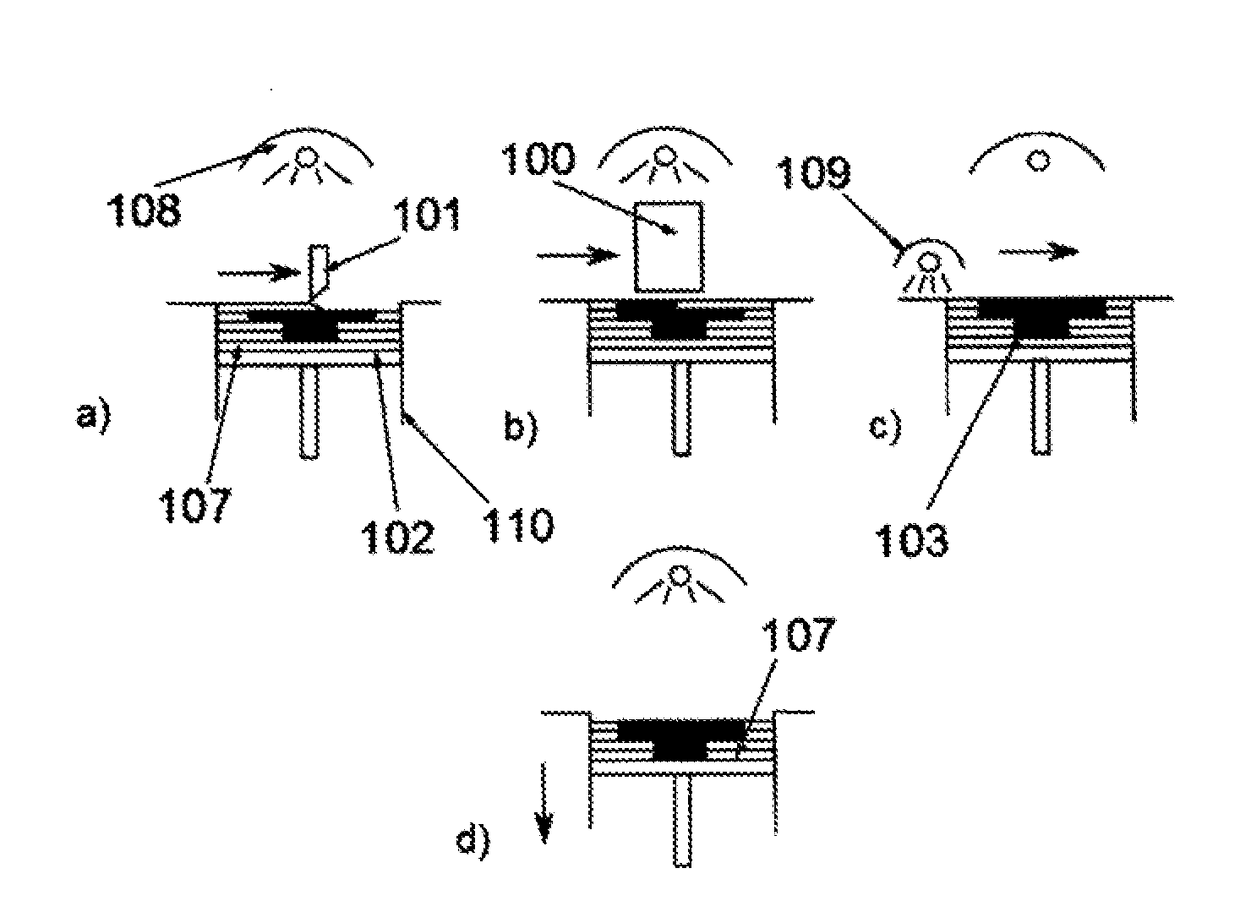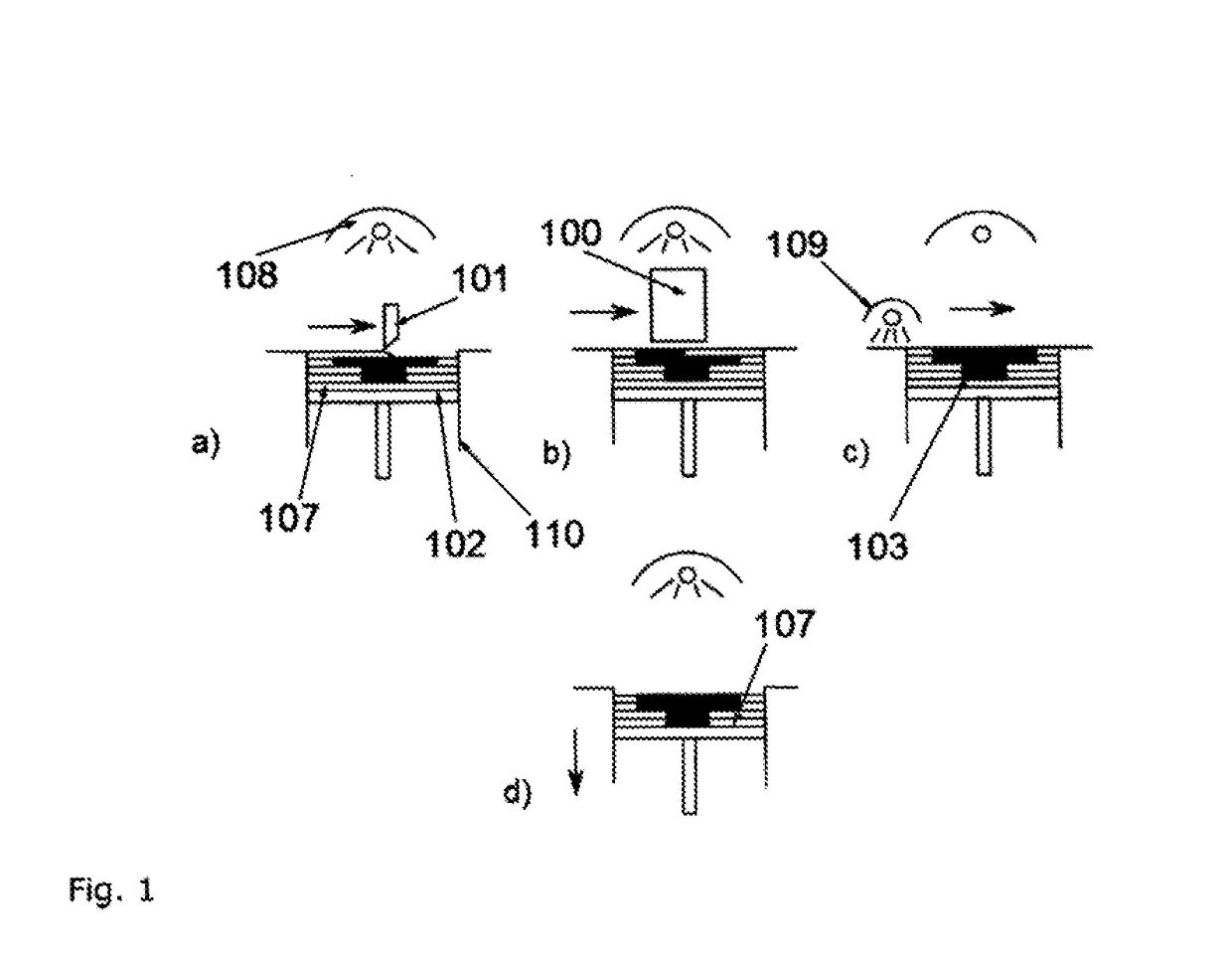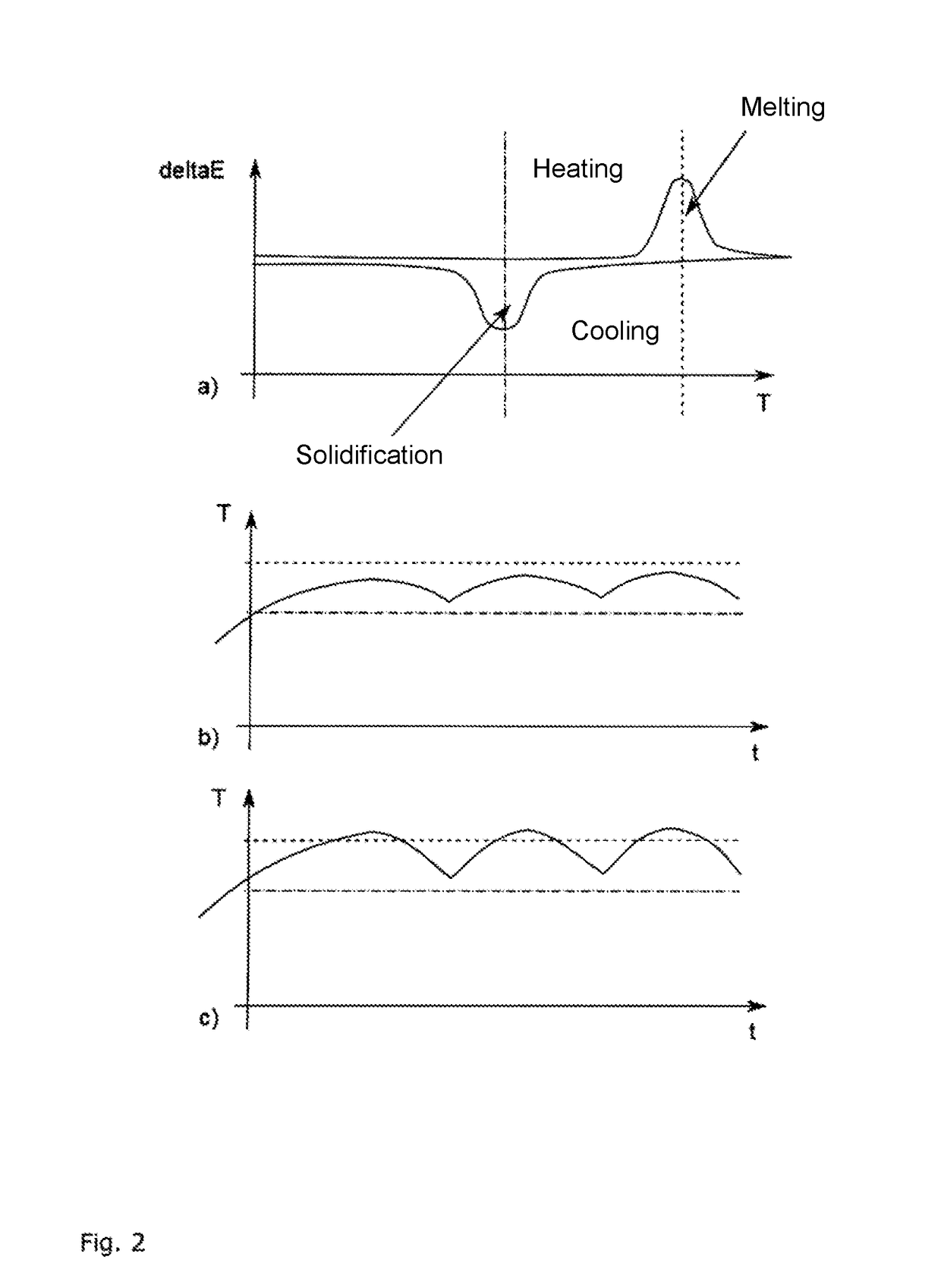Method and device for producing 3D moulded parts by means of a layer construction technique
a layer construction and 3d modeling technology, applied in the direction of additive manufacturing, additive manufacturing processes, solids additive manufacturing, etc., can solve the problems of powder to “age”, powder to exceed the cost of standard polyamide by a factor of 20-30, and the bulk density of the particle material bed cannot exceed a certain amount, so as to achieve the effect of higher boiling poin
- Summary
- Abstract
- Description
- Claims
- Application Information
AI Technical Summary
Benefits of technology
Problems solved by technology
Method used
Image
Examples
example 1
Device Comprising an Inkjet Print Head with a Binary Droplet Size
[0192]The injket print heads common in 3D printing deposit one droplet on a dot in the raster of the print area. The size of said droplet is adjusted once.
[0193]During printing, in the method according to the invention, a respective cross-sectional image of the desired components (103) is printed using absorber, said image being adapted to the construction height. In this case, the image is printed in an intensity ensuring definite sintering of the particles during the pass of the sintering lamp. As described above, unprinted areas will remain unsintered. The necessary amount of liquid imprinted per raster dot in this case will be considered black in the following.
[0194]In the process, a jacket (301) is printed around the component, said jacket (301) representing a greyscale value, i.e. containing less absorber based on the local average. As preferred according to the invention, the jacket (301) is determined from the ...
example 2
Greyscale Print Head
[0198]A device comprising a greyscale print head is more precise in use. These print heads are common and well-known in the print media sector. They allow the apparent resolution to be increased in this sector, thus achieving a better image quality.
[0199]In 3D printing, this increase in resolution does not have a direct effect. However, according to the invention, this technique can be used to introduce different amounts of liquid in the component (103) and jacket (301) areas. For instance, the amount of liquid introduced in the jacket area may be set to 50% of that introduced in the component area. Data transmission is effected by the use of a polychromatic raster bitmap. As a minimum, another raster bitmap can be defined which contains the data for the peripheral area. The electronic system of the print head then considers the respective bits as greyscale information.
example 3
Material System Comprising a Separating Agent
[0200]Further essential degrees of freedom result for the invention if several different liquids are used for printing.
[0201]For this purpose, the device according to the invention has to be extended. A second print head (508) is used which can print the second absorber. In this case, the data path in the control unit of the machine need not be changed. The data is divided up electronically before the respective print head. This print head need not be a separate physical unit, but can be part of the print head (100) of the device.
[0202]The second absorber liquid may contain an oil, for example, which serves as a separating agent. This separating agent deposits between the individual particles and prevents their contact with the molten base material. In the case of polyamide 12 as base material, a certain amount of silicone oil in the printing liquid may serve as separating agent. This oil must be maintained as a suspension with the rest o...
PUM
| Property | Measurement | Unit |
|---|---|---|
| wavelength range | aaaaa | aaaaa |
| thickness | aaaaa | aaaaa |
| thickness | aaaaa | aaaaa |
Abstract
Description
Claims
Application Information
 Login to View More
Login to View More - R&D
- Intellectual Property
- Life Sciences
- Materials
- Tech Scout
- Unparalleled Data Quality
- Higher Quality Content
- 60% Fewer Hallucinations
Browse by: Latest US Patents, China's latest patents, Technical Efficacy Thesaurus, Application Domain, Technology Topic, Popular Technical Reports.
© 2025 PatSnap. All rights reserved.Legal|Privacy policy|Modern Slavery Act Transparency Statement|Sitemap|About US| Contact US: help@patsnap.com



